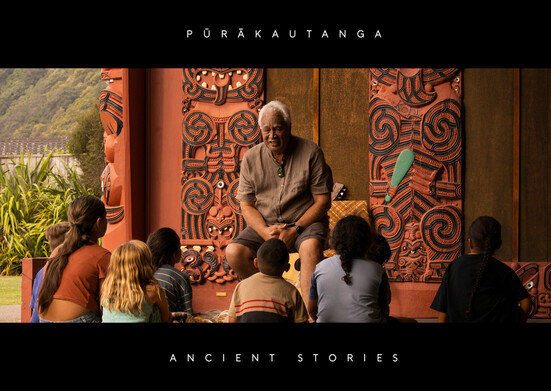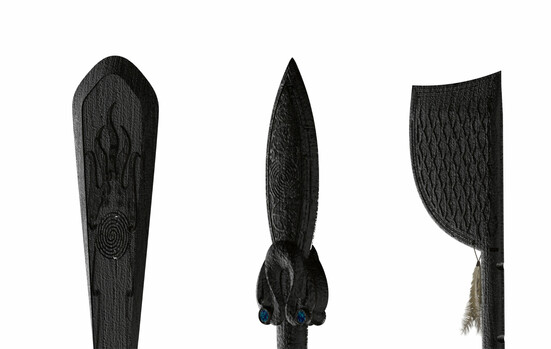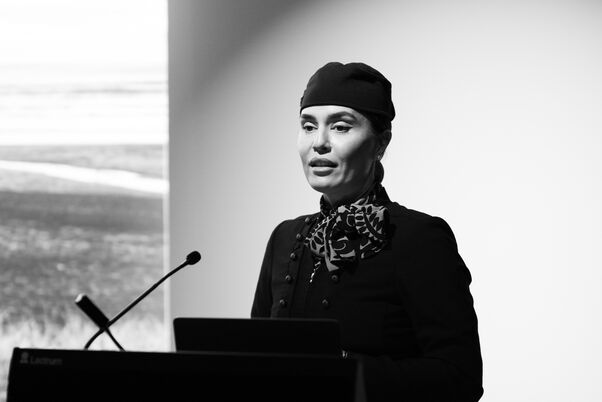City
Auckland

The Best Design Awards are a major feature of the local design calendar and some of last year's winners are touring the country to offer first-hand insights into their projects.
This event is brought to you by Resene
Johnson Witehira & James Prier

Paku Gardening Tools
While playing with his son at Kohanga Reo, Johnson noticed something that bothered him. None of the tools the kids were playing with - trowels, small shovels and forks - connected to his culture or Aotearoa. Johnson mentioned this observation to his friend and fellow designer James Prier. James showed up at Johnson's doorstep three months later with several rough prototypes of timo, toki, kāheru and kō in hand. This simple but powerful design project that weaves together te taiao and tamariki in a fun and engaging way.
Colette McCartney DINZ & Carin Wilson

Whangārei Māori Land Court
The Whangārei Māori Land Court is one of nine regional courtrooms of its kind throughout Aotearoa. The Ministry of Justice emphasised its desire for a place that would feel welcoming and calm while also respecting the cultural importance of the Court. The care taken in this design process is evident, creating a courthouse within an existing building that speaks to the whakapapa of tangata whenua of the rohe of Whangarei. Mahi toi design elements are successfully integrated in contemporary form, alongside traditional carving resulting in an uplifting space that reflects the Mana of the Court.
Anzac Tasker FDINZ, Jahmaine Cummings-Hodge, Jenny Simpson & Lauren Tipene

Tiaki and the Guardians
As Aotearoa prepared to reopen its boarders to the world after a nationwide rāhui from our overseas manuhiri for over two years, Araraurangi (Air New Zealand) and Te Kāhui Tautiaki took a moment to breathe, to regather and to wānanga in depth on how best to welcome the world back to our shores under a cloak of tiakitanga and through a world view unique to this place. Shifting the mindset to proactively attract conscious travellers that align with our values, a decision was made to send a wero to the world, that Aotearoa has lifted its rāhui, and is ready to invite all those who share in our cherished spirit of manaakitanga. Since its release in May, the video has been viewed more than 27 million times around the world. Eclipsing all expectations and shining a light back on Aotearoa after difficult times for our nation’s tourism community.
Bella Martin DINZ

Ngā Mau Rākau o Atua Wāhine
Ngā Mau Rākau o Atua Wāhine serves to uplift Māori means of communication; oral history, pūrakau (narratives), whakairo (carving), and mau rākau (weaponry). What started as an exploration of the decolonised quickly became the re-Indigenising of design communication - the recentering of Māori methods. These pieces, designed to be CNC routed (a form of digital carving), showcase the pūrākau of the atua Mahuika, Hinenuitepō and Hineteiwaiwa. The taiaha, tewhatewha and pouwhenua designed for this project are weapons both physically and metaphorically. They are a thoughtful and well realised project exploring how our stories can live and be expanded using the technologies and skills we now have access to.
Kyani Utia DINZ, Sisi Panikoula DINZ & Jordan Tane DINZ

What makes me Plastic?
The negative term ‘plastic’ has come about mostly from young Māori and Pasifika who do not feel worthy, and this has led to even more young Māori and Pasifika being reluctant to identify with their culture. When the AUT students executed a questionnaire with over 200 young Māori and Pasifika, it was found that 68% of respondents felt they were ‘plastic’ which led them to believe that if their communities are to ever fix this divide within each culture, that the attitude and perspective of people needs to change. They found it difficult articulating the project in a way where others were able to understand it. This lack of understanding was a pivotal part of the development of their project which fundamentally led them to change from an educational tool to a confrontative campaign. ‘What makes me Plastic’ is bold and self-reflective. It acts as both a question and a statement.






